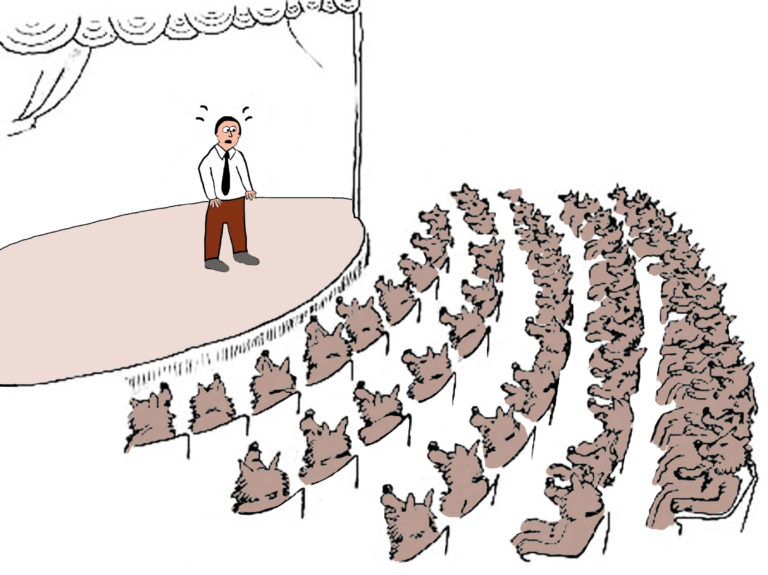
With research demonstrating gastric ulcers potentially affect up to 90% of performance horses and 60% of all horses (Mitchell, 2001), gastroscopy examinations are in higher demand than ever. Including them as part of a veterinary practice’s services is a great way to provide both comprehensive equine care and generate additional revenue.
“I think there are two reasons for the increase in demand for gastroscopy examinations,” said Sarah Reuss, VMD, Dipl. ACVIM, equine technical manager with Boehringer Ingelheim and American Association of Equine Practitioners vice president. “Horse owners have become more educated about the prevalence of gastric ulcers and are seeking to make informed decisions about conditions that could be affecting their horse’s performance and quality of life. Fortunately, as endoscopic equipment has become higher quality and more affordable, veterinarians are embracing that they can provide a more complete continuum of care to their patients while simultaneously recognizing a relatively quick return on investment after purchasing the equipment.”
Over the past decade, the Boehringer Equine Professional Services Veterinary team has helped train veterinarians and veterinary technicians around the country on how to fine-tune their gastroscopy skills. During a recent daylong hands-on session at Stillwater Equine Veterinary Clinic, in Stillwater, Minnesota, Hoyt Cheramie, DVM, MS, Dipl. ACVS, professional services veterinarian for Boehringer Ingelheim, worked with the team there to develop more efficient scoping techniques.
“One of the most important things to ensure efficient and complete scoping examinations is to develop a systematic approach and do the exams the same way every time,” Cheramie said. “Clear, concise communication between the veterinarian and technician is also key.”
Reuss shared additional tips for successful gastroscopy examinations:
Schedule Multiple Examinations for the Same Day
Gastroscopy examinations are rarely emergencies and, in fact, require planning for adequate fasting. By grouping examinations back to back one day a week or every other week, practices can maximize efficiencies in terms of staffing, equipment setup, and cleaning. This can be done in the clinic or at a large barn.
Train Technicians
Technicians play a crucial role in partnering with veterinarians to complete examinations quickly and efficiently. Have one or more technicians well-trained on how to pass the scope during the procedure and clean the scope afterward. This frees up the veterinarian to focus exclusively on the examination process and communicating with the horse owner.
Manage the Horse
If possible, have the horse dropped off at the clinic the night before the examination. There are two benefits to doing this: knowing the horse was fasted properly and being able to conduct the examination first thing in the morning instead of waiting for the horse to arrive.
Confirm Fasting Instructions
If the horse cannot be brought to the clinic the night before or the examination is being conducted on the farm, confirm the fasting instructions with the horse owner 24 hours in advance of the procedure. It’s frustrating and a poor use of time to get set up and into the stomach only to find the examination can’t be completed due to residual material in the stomach.
Schedule Follow-up
Should gastric ulcers be present and a course of treatment prescribed, schedule (and consider charging for) the follow-up gastroscopy examination before the horse leaves the clinic or the veterinarian leaves the farm. Just like you would recheck a tendon lesion before putting a horse back to full work, follow-up gastroscopy examinations are necessary to be sure the gastric ulcers have healed.
Ann Bower, DVM, a participant in Cheramie’s training session at Stillwater Equine Veterinary Clinic, said, “In the big scheme of things, with the price of treatment and with as much money as we spend on our horses and this sport, I tell my horse owners that gastroscopy examinations are well worth the investment.”
Educational videos about cleaning scopes and performing gastroscopy examinations can be found on the Boehringer Ingelheim Equine Health YouTube channel.
About Boehringer Ingelheim Animal Health USA Inc.
Boehringer Ingelheim Animal Health is working on first-in-class innovation for the prediction, prevention, and treatment of diseases in animals. For veterinarians, pet owners, producers, and governments in more than 150 countries, we offer a large and innovative portfolio of products and services to improve the health and well-being of companion animals and livestock.
As a global leader in the animal health industry and as part of the family-owned Boehringer Ingelheim, we take a long-term perspective. The lives of animals and humans are interconnected in deep and complex ways. We know that when animals are healthy, humans are healthier too. By using the synergies between our Animal Health and Human Pharma businesses and by delivering value through innovation, we enhance the health and well-being of both.
Boehringer Ingelheim Animal Health has deep roots in the U.S. From a start in St. Joseph, Missouri, more than 100 years ago, it has grown to encompass seven sites. Boehringer Ingelheim Animal Health’s portfolio contains widely used and well-respected vaccines, parasite-control products and therapeutics for pets, horses and livestock.








